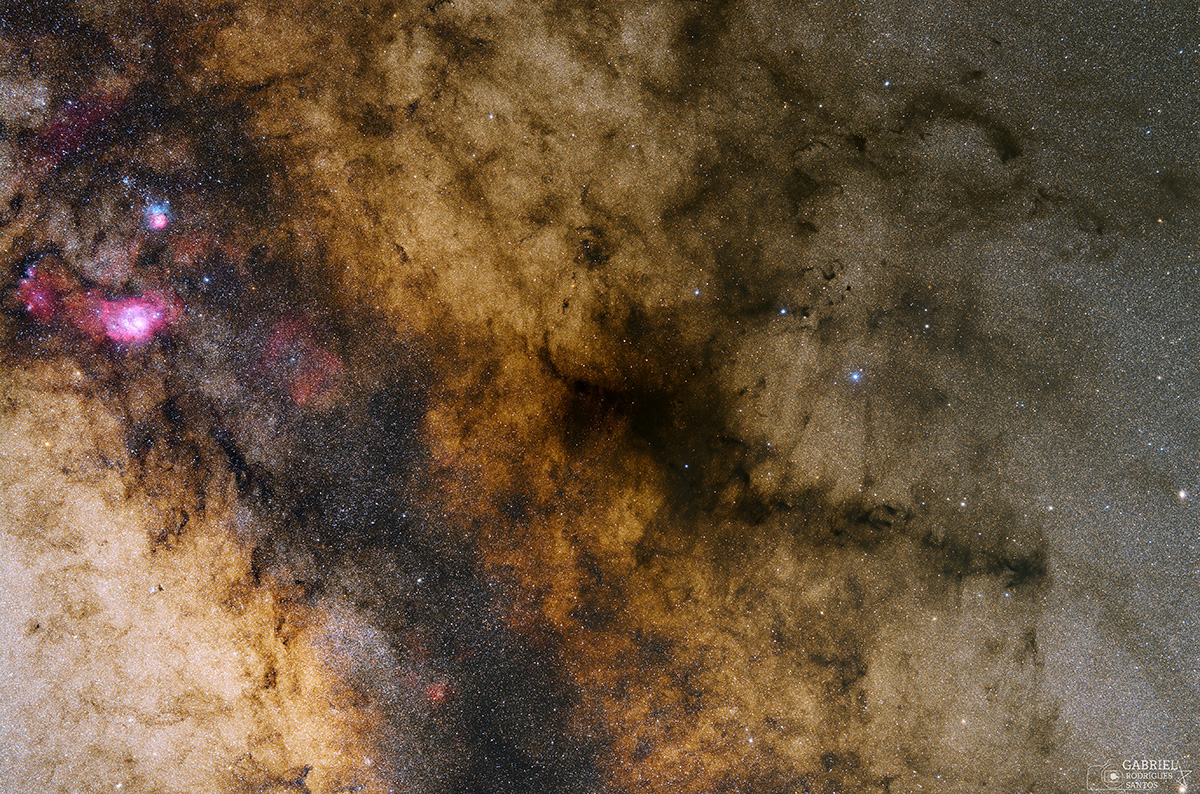从泻湖到管道的中央银河系
(原标题: The Central Milky Way from Lagoon to Pipe)
2021-10-01
浏览次数: 173
黑暗的斑纹和五颜六色的云点缀着这片恒星景观。这张深邃而广阔的照片跨越了30多个满月,穿过拥挤的恒星场,朝向我们银河系的中心。20世纪初,天文学家e·e·巴纳德(E. E. Barnard)将这些模糊的星际尘埃云编目,右侧的尘埃云包括B59、B72、B77和B78,它们是蛇夫座分子云复体的一部分,距离我们只有450光年。在肉眼看来,它们的组合形状就像一个管茎和碗,所以这个暗星云的通俗名字是管状星云。左边聚集的三个明亮星云是距离人马座约5000光年的恒星托儿所。在18世纪,天文学家查尔斯·梅西耶(Charles Messier)在他的明亮星团和星云目录中包括了其中的两个;M8是三颗星中最大的一颗,而颜色鲜艳的M20就在上面。第三个突出的发射区域包括最左边的NGC 6559。M20本身被模糊的尘埃带分开,也被称为三裂星云。M8的绰号是泻湖星云。
查看原文解释
Dark markings and colorful clouds inhabit this stellar landscape. The deep and expansive view spans more than 30 full moons across crowded star fields toward the center of our Milky Way Galaxy. Cataloged in the early 20th century by astronomer E. E. Barnard, the obscuring interstellar dust clouds seen toward the right include B59, B72, B77 and B78, part of the Ophiuchus molecular cloud complex a mere 450 light-years away. To the eye their combined shape suggests a pipe stem and bowl, and so the dark nebula's popular name is the Pipe Nebula. Three bright nebulae gathered on the left are stellar nurseries some 5,000 light-years distant toward the constellation Sagittarius. In the 18th century astronomer Charles Messier included two of them in his catalog of bright clusters and nebulae; M8, the largest of the triplet, and colorful M20 just above. The third prominent emission region includes NGC 6559 at the far left. Itself divided by obscuring dust lanes, M20 is also known as the Trifid. M8's popular moniker is the Lagoon Nebula.
© Gabriel Rodrigues Santos
